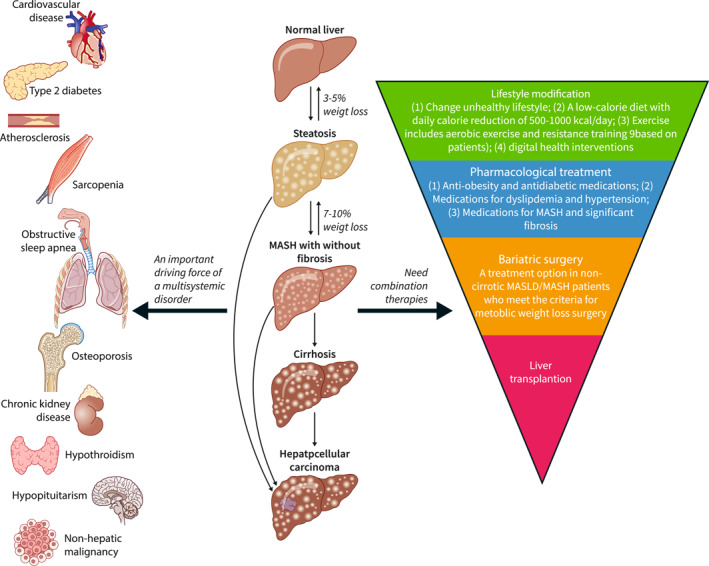FIGURE 3.

Metabolic Dysfunction Associated Steatotic Liver Disease (MASLD) as an important driving force of multisystemic disorders and its management. MASLD covers a spectrum from simple steatosis to Metabolic Dysfunction Associated Steatohepatitis (MASH), and then cirrhosis and hepatocellular carcinoma. It is well‐known that MASLD not only leads to end‐stage liver disease but also has clinical implications on extrahepatic tissues with reduced quality of life, including increasing the risk of type 2 diabetes, chronic kidney disease, and non‐hepatic malignancy. Given its pathophysiology, the management of the underlying metabolic drivers of the disease by lifestyle modification and weight loss is the cornerstone of the treatment of MASLD/MASH. For MASLD patients with overweight/obesity, a weight loss of 3%–5% can reduce steatosis, while a 7% weight loss can lead to MASH regression, and a 10% weight loss may result in fibrosis regression. Some drugs already on the marked for the treatment of co‐morbidities have shown some efficacy. Liver transplantation and bariatric surgery should be performed in some patients with good indications. Combination therapies targeting multiple pathways and the integration of digital health interventions hold potential for enhancing the efficacy and safety of MASLD treatments.
